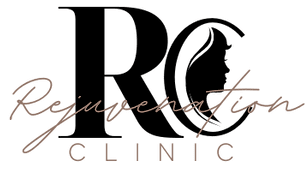Noticing more strands in your hairbrush than usual? That sinking feeling when you spot your scalp peeking through where thick hair once grew? You’re not alone. Hair loss affects millions of people worldwide, but here’s what most don’t realize: the timing of your response makes all the difference.
Early hair fall intervention isn’t just beneficial—it’s your best shot at preserving the hairline you’ve always known. While many wait until significant thinning becomes impossible to ignore, those who act quickly often see the most dramatic results. The science is clear: hair follicles respond better to treatment when they’re still active, not after they’ve gone dormant.
This comprehensive guide explores why early action matters, what treatment options work best during initial stages of hair loss, and how you can take control before it’s too late. Whether you’re dealing with the first signs of thinning or want to prevent hair loss from progressing, understanding your options now could save your hairline tomorrow.
Understanding the Hair Loss Timeline
Hair fall treatment becomes exponentially more effective when you understand how hair loss progresses. Your hair follows a natural growth cycle consisting of three phases: anagen (growth), catagen (transition), and telogen (rest). Healthy hair spends most of its time in the anagen phase, which can last 2-7 years.
When hair loss begins, this cycle becomes disrupted. The anagen phase shortens while the telogen phase extends, resulting in thinner, shorter strands that eventually stop growing altogether. This process doesn’t happen overnight—it typically unfolds over months or years, creating a crucial window for intervention.
The key lies in recognizing these early warning signs. Increased shedding during washing or brushing, gradual thinning at the temples or crown, and changes in hair texture all signal that intervention is needed. During these initial stages, hair follicles remain alive and responsive to treatment, making recovery possible.
Once follicles become dormant, however, the challenge intensifies dramatically. Dormant follicles may not respond to topical treatments, and more aggressive interventions like hair transplantation become necessary. This is why dermatologists consistently emphasize early action over waiting for dramatic changes.
The Science Behind Early Intervention
Research consistently demonstrates that early hair fall treatment yields superior outcomes compared to delayed intervention. A landmark study published in the Journal of the American Academy of Dermatology found that patients who began treatment within six months of noticing hair loss experienced significantly better regrowth rates than those who waited longer.
The biological explanation is straightforward: active hair follicles contain stem cells that can be reactivated through proper treatment. These stem cells gradually decrease in number and activity as hair loss progresses, making later intervention less effective.
Inflammation also plays a crucial role in hair loss progression. Early stages of androgenetic alopecia and other forms of hair loss involve inflammatory processes that gradually damage follicle structures. Anti-inflammatory treatments work best when applied before significant structural damage occurs.
Blood circulation to hair follicles represents another critical factor. Treatments that improve scalp circulation—such as microneedling, PRP therapy, and certain topical medications—show enhanced effectiveness when follicles haven’t yet experienced prolonged periods of reduced blood flow.
Modern hairline treatment protocols leverage this understanding by combining multiple approaches that address different aspects of hair loss simultaneously. This multi-modal strategy proves most effective during early stages when follicles retain maximum responsiveness.
Proven Early Treatment Options
Topical Medications
Minoxidil remains the gold standard for early hair fall treatment. This FDA-approved medication works by extending the anagen phase and improving blood circulation to hair follicles. Clinical trials show that 5% minoxidil solution can slow or stop hair loss in up to 85% of users when applied during early stages.
Finasteride, available in both oral and topical formulations, blocks the conversion of testosterone to dihydrotestosterone (DHT)—the hormone primarily responsible for male pattern baldness. Studies indicate that early use of finasteride can prevent further hair loss in 90% of men and promote regrowth in approximately 65%.
Newer topical treatments like copper peptides and adenosine show promising results for early hair fall intervention. These compounds work by stimulating cellular activity in hair follicles and extending the growth phase of the hair cycle.
Advanced Professional Treatments
Professional treatments offer more intensive approaches to combating early hair loss. Platelet-Rich Plasma (PRP) therapy has gained significant attention for its ability to stimulate natural hair growth using your body’s own healing factors.
During PRP treatment, blood is drawn and processed to concentrate platelets containing growth factors. When injected into the scalp, these growth factors activate dormant follicles and strengthen existing hair. Studies show PRP treatments are most effective when administered during early stages of hair loss.
Growth factor treatments represent another cutting-edge option. These treatments deliver concentrated growth factors directly to hair follicles, promoting cellular regeneration and improved hair growth. When combined with microneedling techniques, growth factors penetrate deeper into the scalp tissue.
Keravive treatment offers a comprehensive approach to scalp health and hair growth. This professional treatment cleanses, exfoliates, and nourishes the scalp while delivering targeted serums designed to improve hair thickness and health.
Combination Therapy Approaches
The most effective hair fall treatment protocols often combine multiple interventions. For example, combining topical minoxidil with microneedling has shown superior results compared to minoxidil alone. The micro-injuries created during microneedling enhance absorption of topical treatments while stimulating natural healing responses.
Professional treatments like PRP can be combined with at-home maintenance protocols for sustained results. Many patients follow a schedule of quarterly professional treatments supplemented by daily topical applications and weekly microneedling sessions.
Nutritional support plays a crucial supporting role in combination therapy. Supplements containing biotin, iron, zinc, and specialized hair growth complexes can enhance the effectiveness of primary treatments while addressing any underlying nutritional deficiencies.
Prevent Hair Loss: Lifestyle and Prevention Strategies
Prevention remains the most powerful tool in your hair preservation arsenal. Understanding and addressing risk factors can significantly slow or prevent hair loss progression, making treatment more effective when intervention becomes necessary.
Stress management deserves special attention since chronic stress accelerates hair loss through multiple mechanisms. Elevated cortisol levels disrupt the hair growth cycle while increasing inflammation throughout the body. Implementing stress reduction techniques like meditation, regular exercise, and adequate sleep can meaningfully impact hair health.
Nutrition plays a fundamental role in hair growth and maintenance. Hair follicles are among the most metabolically active structures in the body, requiring steady supplies of protein, vitamins, and minerals. Deficiencies in iron, zinc, biotin, or protein can trigger or accelerate hair loss even in genetically susceptible individuals.
Scalp care practices significantly influence hair loss progression. Gentle shampooing with sulfate-free products, avoiding excessive heat styling, and protecting hair from UV damage all contribute to healthier hair and scalp conditions. Regular scalp massage can improve circulation and potentially slow hair loss progression.
Environmental factors also matter more than many realize. Pollution, hard water minerals, and chemical exposures can damage hair and irritate the scalp. Using filtered water for washing, protecting hair from pollution with leave-in treatments, and choosing gentle styling products can all support hair health.
When to Seek Professional Help
Recognizing when to transition from self-care to professional hairline treatment can make the difference between successful intervention and continued hair loss. Several key indicators suggest it’s time to consult a specialist.
Rapid hair loss—defined as losing more than 100 hairs daily for several weeks—warrants immediate professional evaluation. Sudden onset hair loss may indicate underlying medical conditions requiring specific treatment approaches beyond typical hair loss interventions.
Patchy hair loss patterns, including circular bald spots or asymmetrical thinning, often signal conditions like alopecia areata that require specialized medical treatment. These patterns differ significantly from typical male or female pattern baldness and respond to different treatment protocols.
Family history of early or aggressive hair loss suggests genetic predisposition that benefits from professional monitoring and early intervention. If parents or siblings experienced significant hair loss before age 30, seeking consultation at the first signs of thinning proves worthwhile.
Lack of response to over-the-counter treatments after 6-8 months indicates the need for professional evaluation. Dermatologists and hair specialists can prescribe stronger medications, perform diagnostic testing to identify underlying causes, and recommend advanced treatment options.
Treatment Success Stories and Expectations
Understanding realistic expectations helps maintain motivation during hair fall treatment. Most effective treatments require 3-6 months before visible improvements become apparent, with optimal results typically achieved after 12-18 months of consistent use.
Early intervention success stories often involve combination approaches tailored to individual needs. Patients who begin treatment at the first signs of thinning frequently achieve complete stabilization of hair loss with significant regrowth in thinning areas.
Professional treatments like PRP therapy show particularly impressive results when initiated during early stages. Many patients report increased hair thickness, reduced shedding, and improved scalp health within 3-4 months of beginning treatment protocols.
The psychological benefits of early treatment extend beyond physical improvements. Patients who address hair loss proactively report higher confidence levels and reduced anxiety about future hair loss compared to those who waited until advanced stages.
Maintenance requirements vary by treatment type but generally involve ongoing commitment to achieve sustained results. Most patients find that early intervention allows for less intensive long-term maintenance compared to treatments begun after significant hair loss has occurred.
Your Hair Preservation Action Plan
Taking control of your hair health starts with honest assessment and prompt action. Early hair fall treatment offers the best opportunity to preserve your hairline and potentially restore hair you’ve already lost.
Begin with a thorough evaluation of your current hair status, family history, and risk factors. Document your hair loss progression through photographs and keep a hair loss diary noting daily shedding amounts, potential triggers, and changes in hair texture or growth patterns.
Consider professional consultation even if hair loss seems minimal. Specialists can identify subtle changes invisible to untrained eyes and recommend preventive measures before significant loss occurs. Many clinics offer comprehensive hair analysis that can guide treatment decisions.
Implement a comprehensive hair health strategy that addresses multiple factors simultaneously. This might include topical treatments, professional procedures, nutritional optimization, stress management, and improved hair care practices.
Remember that consistency matters more than perfection. Treatments work best when used regularly over extended periods. Missing occasional applications is normal, but maintaining overall consistency determines long-term success.
The investment in early hair fall treatment pays dividends in preserved confidence, reduced future treatment costs, and better overall outcomes. Your future self will thank you for taking action while your hair follicles remain responsive to intervention.

